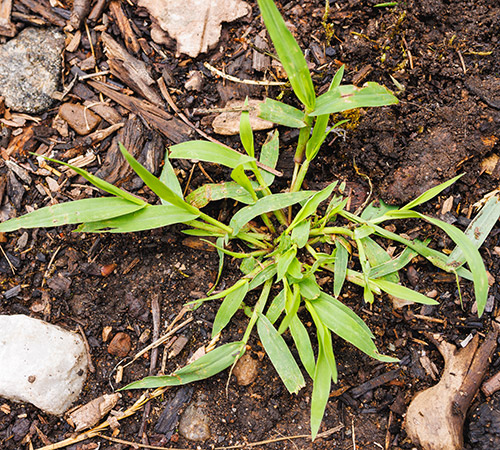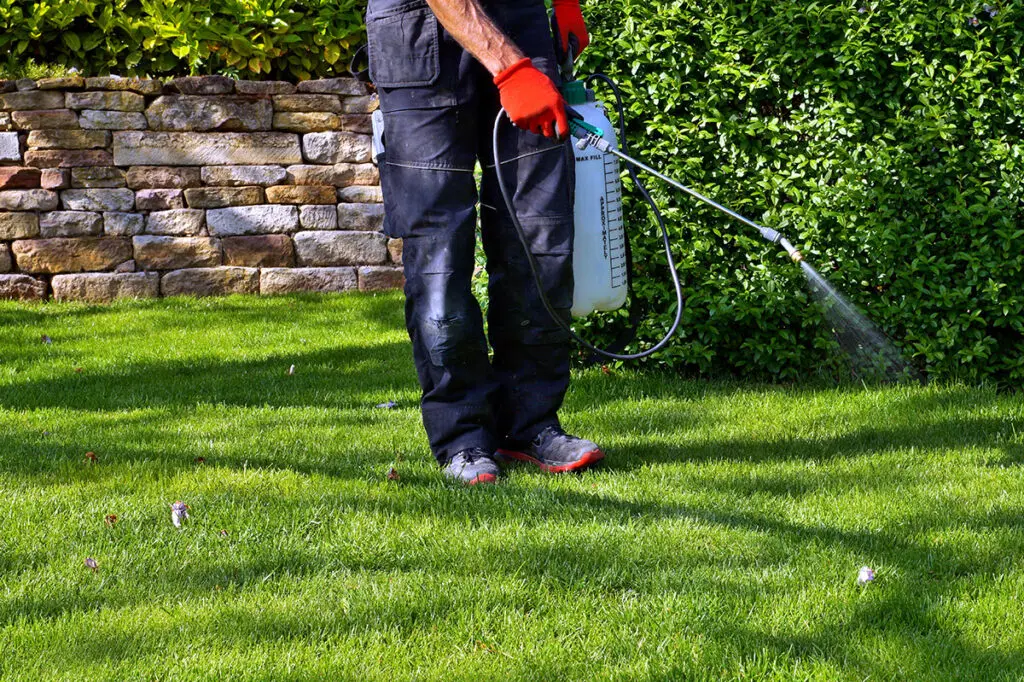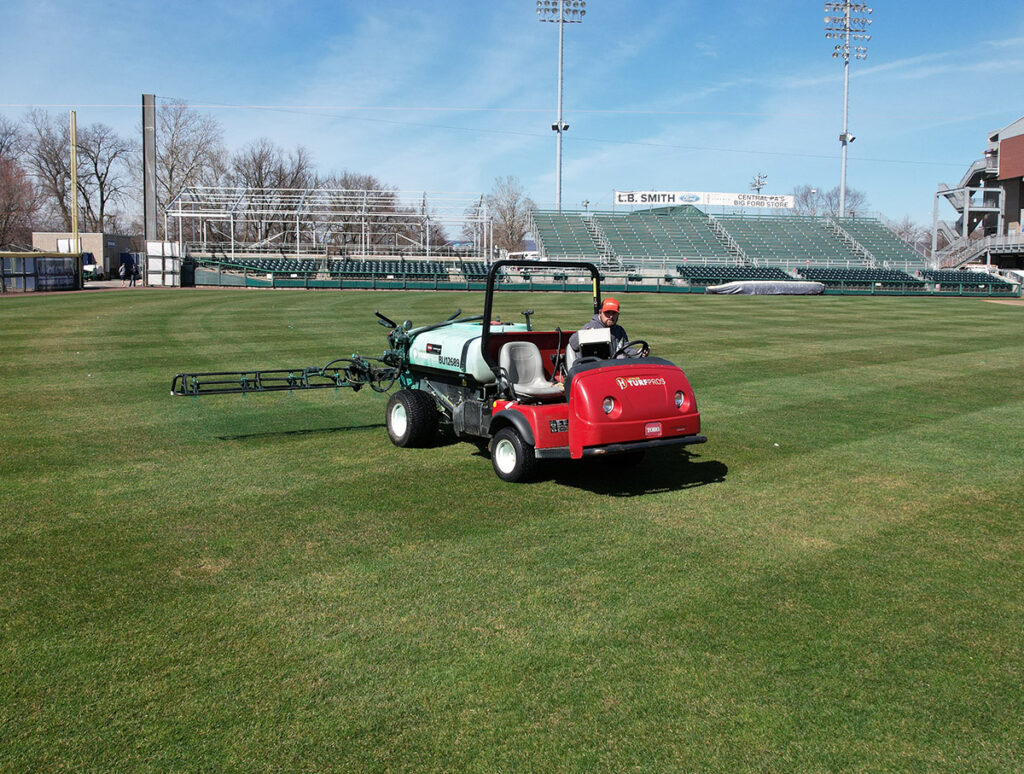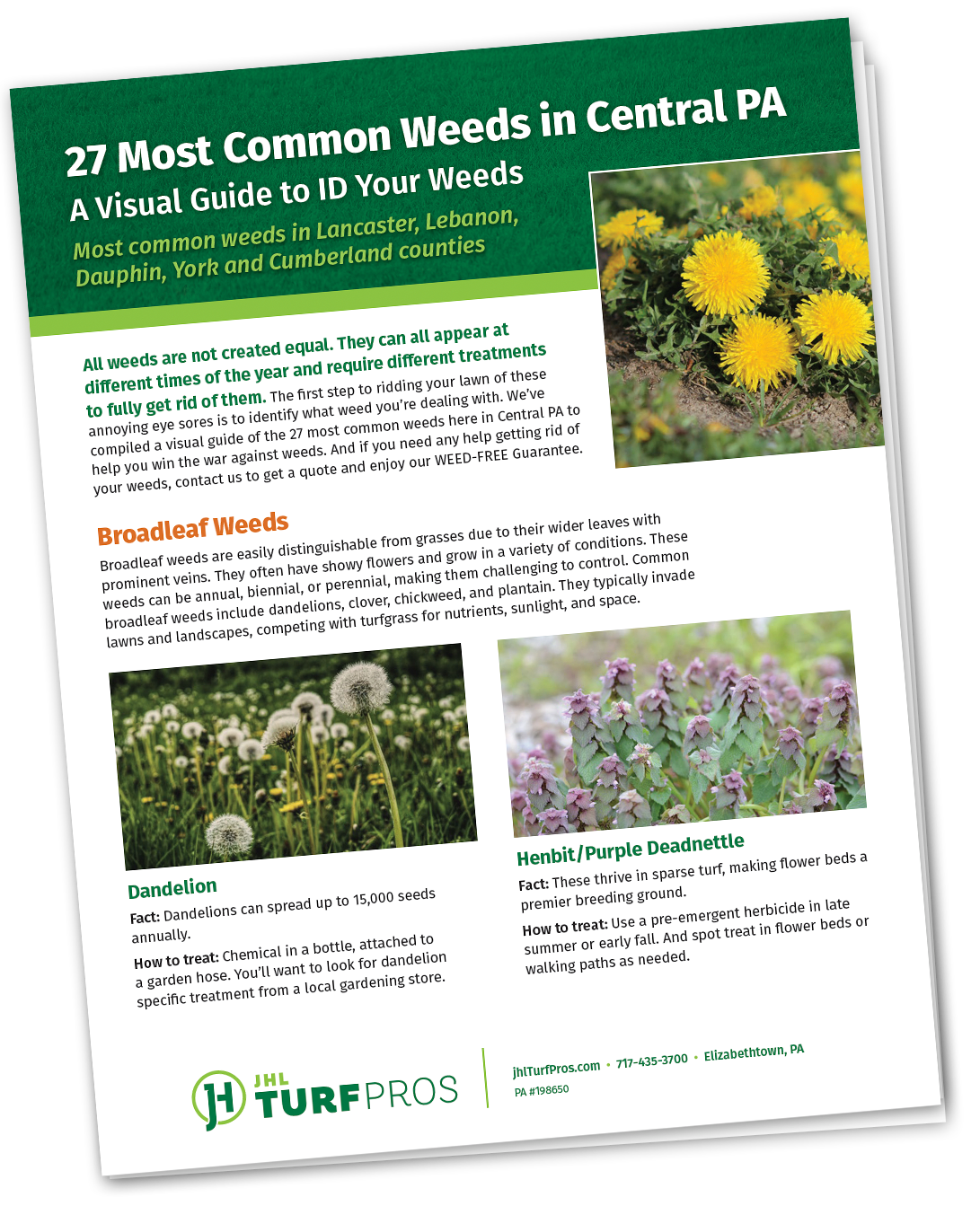
Crabgrass is one of the most stubborn annual weeds, thriving in hot, dry conditions and quickly overtaking lawns. If left untreated, one crabgrass plant can drop thousands of seeds—causing even bigger problems the following year. In this guide, JHL Turf Pros shares how to get rid of crabgrass, prevent regrowth, and keep your lawn healthy year-round.
What Is Crabgrass?

Crabgrass is a fast-growing annual weed that tends to pop up in bare or thin spots on your lawn. It spreads aggressively and thrives in hot, dry conditions where healthy turf is struggling.
This weed gets its name from its appearance—low-growing stems spread out like crab legs, covering the ground quickly. Crabgrass typically germinates in early spring when soil temperatures reach about 55°F, and it grows vigorously throughout the summer.
Although it dies off with the first frost, each crabgrass plant can leave behind thousands of seeds, lying dormant in your soil until next year. This makes crabgrass a persistent issue that can weaken healthy grass, create bare patches, and take over your lawn fast. Lawns with shallow root systems or poor density are more vulnerable, while lawns that maintain a healthy root structure and dense cover are more resistant to crabgrass and other weeds.
How to Kill Crabgrass Once It Appears
Once crabgrass appears, quick action is crucial. Here are the most effective methods to kill it:
Use spot treatments for isolated patches and broad applications for large infestations. Acting quickly helps prevent seed drop and future problems. While these methods help, remember that watering encourages stronger turf growth, which makes it more difficult for crabgrass and other weeds to gain a foothold.

When and How to Apply Pre-Emergent Herbicides
The best way to prevent crabgrass is to stop it before it starts—with a pre-emergent herbicide.
Apply pre-emergents in early spring when soil temperatures reach about 55°F for several days. This blocks crabgrass seeds from germinating before they become visible.
These treatments are safe for established lawns but can interfere with newly seeded areas. After application, light watering helps activate the herbicide and create a barrier against future growth.
Looking for a natural option? Corn gluten meal is an alternative, but it’s generally less effective than herbicide options.
Lawn Care Practices to Prevent Crabgrass
Keeping a healthy, dense lawn is your best defense against crabgrass. Here’s how to give your lawn the advantage:
Following these practices consistently helps shade the soil, reduce bare spots, and make your lawn tough enough to resist crabgrass. With steady care, you’ll maintain a healthy, thriving yard that supports desired grass growth while crowding out weeds naturally.
Why Crabgrass Keeps Coming Back
Even with your best efforts, crabgrass can return year after year. Why?
Each crabgrass plant can produce thousands of seeds, which remain viable in the soil for years. If you miss weed control for even one season, the problem can multiply quickly.
Crabgrass seeds spread via wind, water, pets, and even your lawn equipment. And since crabgrass thrives in hot, dry conditions, it’s always looking for a weak spot in your lawn.
This is why consistent yearly prevention is key. Stay proactive with lawn care and apply pre-emergents every spring.

When to Call a Lawn Care Professional
If you’ve tried everything and still can’t figure out how to get rid of crabgrass, it might be time to call in the professionals.
- You’re dealing with a large infestation
- You’re unsure which post-emergent herbicide is safe for your grass species
- You want a long-term prevention plan and full lawn restoration
At JHL Turf Pros, we specialize in diagnosing lawn problems and offering customized treatments for your turf and soil conditions.
Trust JHL Turf Pros for a Crabgrass-Free Lawn
With years of experience treating Pennsylvania lawns, JHL Turf Pros knows how to eliminate and prevent crabgrass effectively.
Our experts tailor solutions based on your grass species, soil, and seasonal needs. We use safe, proven treatments to restore your turf and keep it looking its best.
Trust our team to deliver a lush, green lawn—free of weeds and full of life.
Request a Lawn Evaluation Today
Say goodbye to crabgrass and hello to a beautiful, healthy lawn. JHL Turf Pros offers expert crabgrass control services tailored to your yard’s unique needs. Request your free quote today and take the first step toward lasting lawn protection.

FREE VISUAL GUIDE:
27 Most Common Weeds in Central PA
Which of these weeds do you have in your lawn? Use this weed guide to identify common weeds that grow in Lancaster, Lebanon, Dauphin, York and Cumberland Counties.
